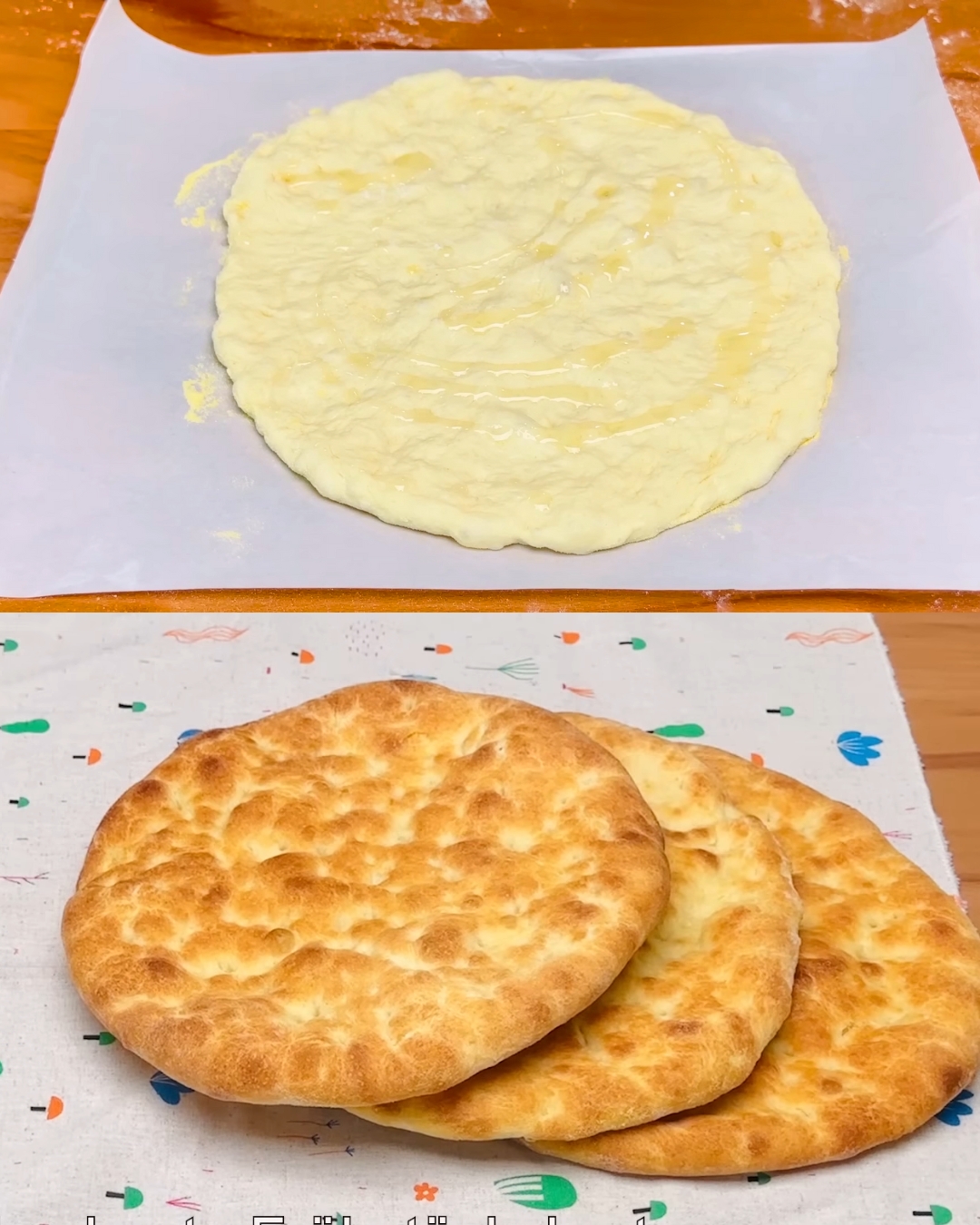- more flour. Knead the dough by hand until it reaches a smooth consistency.
- First Fermentation: Cover the dough and let it ferment for 25 minutes in a warm place (around 30°C or 86°F).
- Folding the Dough: After 25 minutes, grease your hands and fold the dough inwards to incorporate air. Cover again and let it rest for another 20 minutes.
- Second Folding: Grease your hands again and fold the dough once more. After a few minutes of folding, cover the dough and let it rest for 1 hour.
- Shaping the Dough: After the dough has fermented, sprinkle flour on a clean work surface and pour the dough onto it. Form the dough into a ball.
- Dividing the Dough: Divide the dough into 4 equal parts. From each piece, form a ball and let them rest for 7 to 10 minutes.
- Prepare for Baking: Sprinkle flour on top of each ball and gently press to expand the dough. Sprinkle cornmeal onto parchment paper and place the dough on top.
- Final Preparation: Pour 2 tablespoons of olive oil over the dough in the tray.
- Bake the Bread: Preheat your oven to 220°C (428°F) and bake the bread for 7 to 10 minutes or until golden brown.
- Enjoy: Allow the bread to cool slightly, then enjoy it warm, soft, and delicious!
Serving Suggestions
Serve with butter, jam, or your favorite spreads. Great for making breakfast sandwiches or toast!
Cooking Tips
Make sure your water is warm but not hot to avoid killing the yeast. Adjust the amount of flour based on the dough’s texture; it should be soft and slightly sticky.
Nutritional Benefits
This bread is a good source of carbohydrates and can provide energy for your morning activities. Homemade bread allows you to control the ingredients and avoid preservatives found in store-bought options.
Dietary Information
This recipe is vegetarian-friendly. To make it vegan, substitute the olive oil with a plant-based alternative.
Nutritional Facts (per slice)
- Calories: Approximately 120
- Protein: 3 g
- Carbohydrates: 22 g
- Fat: 2 g
- Fiber: 1 g
- Sugar: 0.5 g
Storage
Store any leftovers in an airtight container at room temperature for up to 3 days. For longer storage, wrap in plastic wrap and freeze for up to 1 month.
Why You’ll Love This Recipe
It’s simple and requires minimal ingredients, perfect for beginner bakers! The bread comes out soft and fluffy, ideal for breakfast. It’s versatile; enjoy it plain, or dress it up with your favorite toppings. Homemade bread fills your home with a delightful aroma while baking!
Conclusion
This best breakfast bread is a must-try for anyone looking for a delicious and easy recipe to start their day. With just a few simple steps, you can enjoy freshly baked bread that is sure to impress your family and friends. Enjoy your baking, and bon appétit!
Advertisement
Frequently Asked Questions (FAQ)
- Can I use instant yeast instead of dry yeast?
Yes, you can substitute instant yeast in the same amount as dry yeast. - What can I do if my dough doesn’t rise?
Ensure that the water used to activate the yeast is warm, and your environment is warm enough for fermentation. - Can I add herbs or spices to the dough?
Absolutely! Feel free to add herbs, garlic powder, or cheese for additional flavor. - How do I know when the bread is done baking?
The bread should be golden brown and sound hollow when tapped on the bottom. - Can I make this bread ahead of time?
Yes, you can prepare the dough in advance and refrigerate it before the first rise. - How should I store the bread?
Keep it in an airtight container or bag at room temperature for up to 3 days. - Can I use whole wheat flour?
Yes, you can substitute part or all of the all-purpose flour with whole wheat flour, but you may need to adjust the liquid. - Is this bread suitable for sandwiches?
Yes, this bread is perfect for sandwiches due to its soft texture. - How can I enhance the flavor of the bread?
Consider adding a tablespoon of honey or herbs to the dough for extra flavor. - What can I serve with this bread?
It pairs well with eggs, bacon, or any breakfast spread you enjoy!
Enjoy making this breakfast bread, and feel free to share your results!

